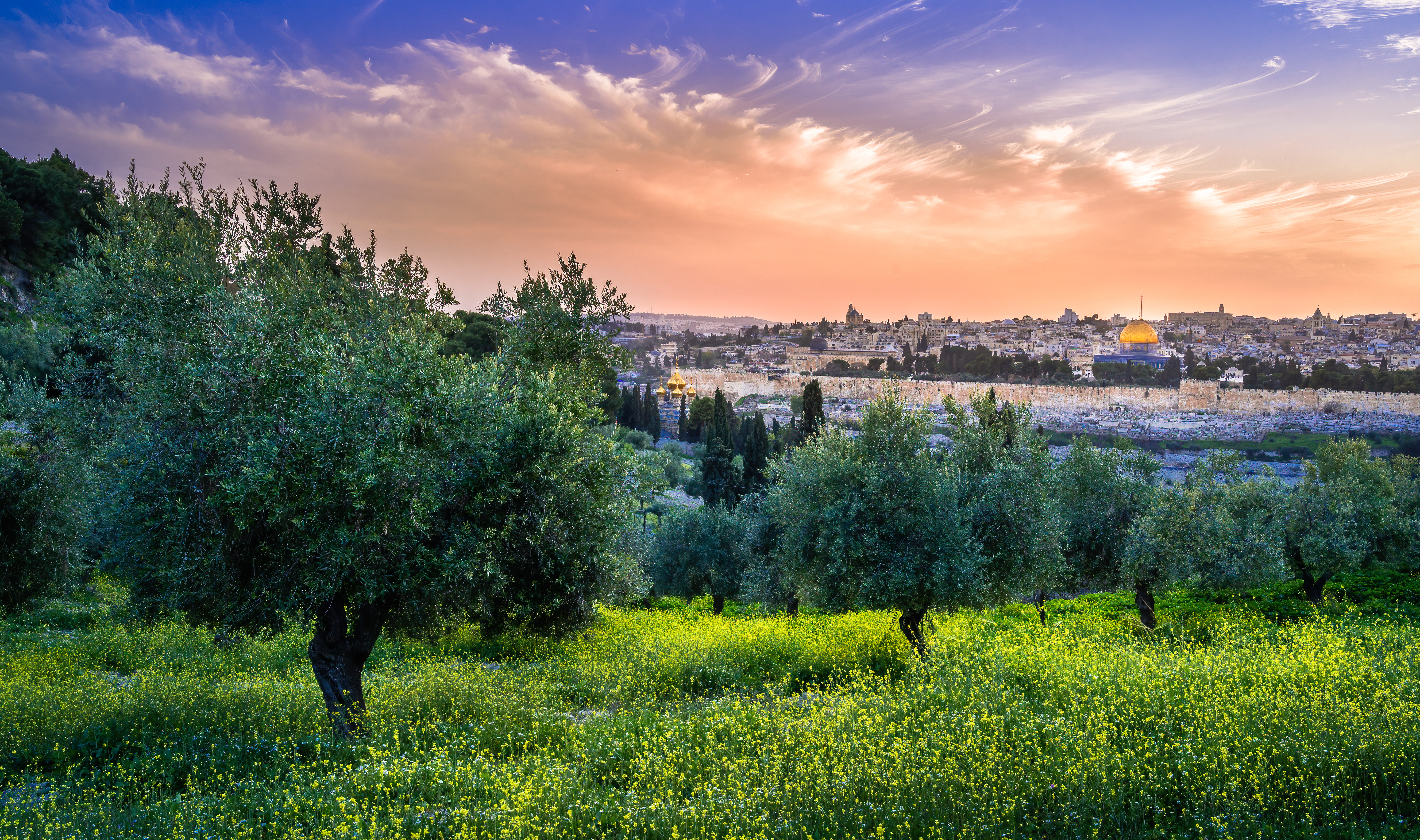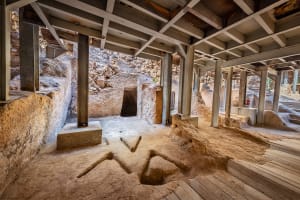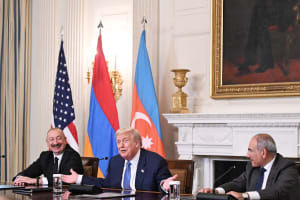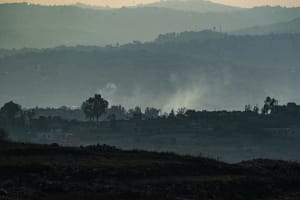The Temple Mount in Jerusalem and the end of times: A biblical perspective
The Temple Mount has been in Muslim hands for centuries following a series of conquests, but following the unexpected Israeli victory in the 1967 Six Day War

The 35 acre plateau on top of Mount Zion is approximately the size of 35 football fields, and the most contested piece of real estate in the world. Why? Because God has claimed it for Himself, and so God’s enemies rage against it. If Israel was chosen to be the “navel” of the world according to Ezekiel 5:5, and Jerusalem as God’s holy city, the Temple Mount is the very epicenter of spiritual significance, from a biblical point of view.
The iconic golden “Dome of the Rock” in the middle of the Temple Mount is often mistaken for a mosque, but it has a different significance. The famous Al Aqsa mosque (meaning “the Far Mosque”),with its trademark grey domes, is on the southern end of the platform, but the blue tiled structure with its golden dome is said to have been built to encase the “foundation stone” of the earth.
The City of David Foundation identifies that foundation stone as the bedrock of Mount Moriah:
“According to Jewish tradition, this is the stone on which the world was founded, hence its name, as well as the place of the binding of Isaac,” the Foundation explains, referring to the moment when God tested Abraham’s faith on that mountain, as recorded in Genesis 22. They note that the foundation stone is typically thought to have been in the Holy of Holies but that today it is found underneath the Muslim edifice of the Dome of the Rock on the Temple Mount.
For Muslims the site is known as Al-Haram al-Sharif (“the Noble Sanctuary”) and it is believed to be the place Mohammed ascended to heaven on a flying horse. However, the holiest site in Islam is in Mecca, almost a thousand miles away, which is why Al Aqsa is the “far away” mosque. Now when Muslims pray on the Temple Mount, they prostrate themselves facing away from the golden dome, and towards Mecca.
The Temple Mount has been in Muslim hands for centuries following a series of conquests, but after the unexpected Israeli victory in the 1967 Six Day War, east Jerusalem was reclaimed from Jordan who had occupied it since 1948, and the whole old city was reunited under Israeli control. As a gesture of peace, Israel handed the hotly contested Temple Mount site back over to Jordan, and it has been administered by the Jordanian Waqf ever since.
That decision has been decried by many, since the Waqf refuses to allow Christians and Jews to pray there. Bibles and prayer books are not allowed – visitors are required to leave any items of that nature behind, and also to comply with the strict modesty laws while in the Waqf controlled area. However, the hot indignation of not being able to pray on the site where the temple once stood has been starting to bubble.
“Each year, more and more Israelis take the dangerous risk of ascending the holy mountain under the hostile guards of Jordanian officials,” wrote Rabbi Tuly Weisz in the Jerusalem Post. “Palestinian terrorists are getting scared as Jews are getting serious about restoring our holy of holies, the site we pray towards every day, and the building we beseech God for repeatedly throughout our liturgy.”
Jewish prayers, which are prayed three times a day, implore God to restore Jerusalem and rebuild His temple. Indeed, we see in the Bible that it will happen.
The first temple, built around 1000 BC, was initially King David’s idea – it wasn’t God’s initiative. However, the holy site was chosen by God in the time of Moses.
“You are to seek only the place Adonai your God chooses from all your tribes to put His Name to dwell – there you will come,” God tells His people in Deuteronomy 12:5, emphasizing again in Deuteronomy 16:5-6: “You may not offer the Passover sacrifice within any of your towns that the Lord your God is giving you, but at the place that the Lord your God will choose, to make his name dwell in it, there you shall offer the Passover sacrifice, in the evening at sunset, at the time you came out of Egypt.”
The Israelites coming out of Egypt had no idea where God’s chosen place was, and God doesn’t mention its location, so how was the place identified? Some 500 years after the exodus, in the time of King David, God brought a terrible plague to a halt on that spot – the threshing floor of Araunah the Jebusite – and David decided to buy it in order to worship God there.
”So David bought the threshing floor and the oxen for 50 shekels of silver. Then David built there an altar to Adonai, and offered burnt offerings and fellowship offerings. So Adonai was moved by prayer of entreaty for the land, and restrained the plague from Israel (2 Samuel 24:18-25).
David was a warrior, but his son’s Hebrew name, Shlomo, comes from the Hebrew word shalom, meaning peace. God chose Solomon to build the temple on that sacred threshing floor because he was not a man of bloodshed. The temple was meant to be a place of peace and blessing, mercy and forgiveness – a place where all the tribes of Israel could worship God and celebrate His feasts.
However, when Israel walked in rebellion, God allowed the temple to be destroyed on the 9th day of the Hebrew month of Av during the Babylonian invasion of 586 BC. Remarkably, the Second Temple – rebuilt by Zerubbabel after the exile – was also destroyed on the 9th of Av, this time by the Romans in 70 AD.
The Bible says a third temple will eventually be built in the same sacred spot. Isaiah 2 describes the Messianic Age when Gentiles from all the nations stream up to worship the God of Israel once again, and 2 Thessalonians chapter 2 also confirms that a temple will be standing when Yeshua comes to rule and reign. The passage describes the “Man of Lawlessness” taking his seat in the temple of God, “proclaiming himself to be God,” only to be destroyed: “the Lord Jesus will kill with the breath of his mouth and bring to nothing by the appearance of his coming” (2 Thessalonians 2:8).
Rabbi Weisz has suggested that the three Abrahamic religions should build the third temple together, “without damaging or disrespecting the Dome of the Rock or Al Aqsa, as part of a future peace plan between Israel and her Arab neighbors to end the plague of Islamic terror once and for all.” He argues that with Mecca being Islam’s primary holy site, the compromise might be conceivable. There is certainly plenty of room to build up there without destroying anything. However, compromise doesn’t seem to be a word the God of Israel is overly fond of. He is a jealous God.
What will happen between now and then, only God knows. But we know this place is very precious to God.
In Psalm 132 God says, "This is my resting place. However, here I will dwell for I have desired it.”
In Ezekiel 43, He declares, "This is the place of my throne, where I will dwell in the midst of the people of Israel forever."
Unsurprisingly Satan wants to steal, kill and destroy all that God loves, and to violate whatever is holy to Him. Yet the history of the Temple Mount shows that desecration and consecration have happened in cycles before, such as the Maccabean revolt against the Greeks recounted every Hanukkah. Satan may defile, but God comes to purify.
It’s no coincidence that the Temple Mount was originally a threshing floor. The Scriptures use the metaphor of threshing the wheat from the chaff over and over as a picture of God separating out the ‘kernels of wheat’: the holy from the profane, the sinner and the saint.
Here is John the Baptist’s description of the Messiah coming: “His winnowing fork is in His hand, and He shall clear His threshing floor and gather His wheat into the barn; but the chaff He shall burn up with inextinguishable fire” (Matthew 3:12).
Clearly, there was no threshing and burning in Yeshua’s first visitation, to John’s consternation (Matthew 11:3), but that day will come. The Messiah will enter that plaza through the Eastern Gate and destroy every abomination that has set themselves up to be worshiped on God’s holy mountain. Yeshua will clear and cleanse, and put all things right.
“Therefore just as the weeds are gathered up and burned with fire, so shall it be at the end of the age. The Son of Man will send forth His angels, and they will gather out of His kingdom all stumbling blocks and those who practice lawlessness. They will throw them into the fiery furnace; in that place will be weeping and gnashing of teeth. Then the righteous will shine forth as the sun in the kingdom of their Father. He who has ears, let him hear!” (Matthew 13:40-43).

Is All Israel News’ faith-based reporting important to you? Be part of it—help us continue by becoming a $5/month supporting partner.

Jo Elizabeth has a great interest in politics and cultural developments, studying Social Policy for her first degree and gaining a Masters in Jewish Philosophy from Haifa University, but she loves to write about the Bible and its primary subject, the God of Israel. As a writer, Jo spends her time between the UK and Jerusalem, Israel.
You might also like to read this:

















